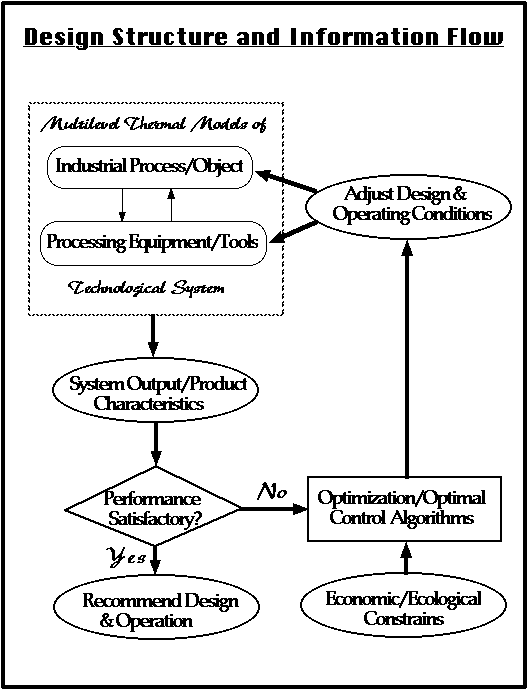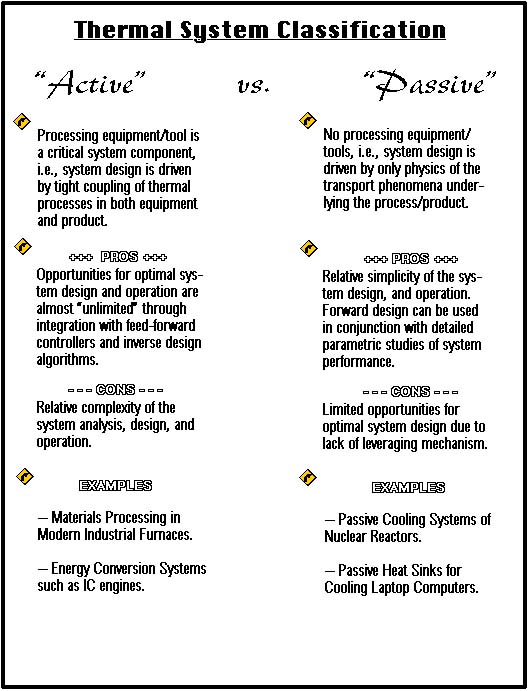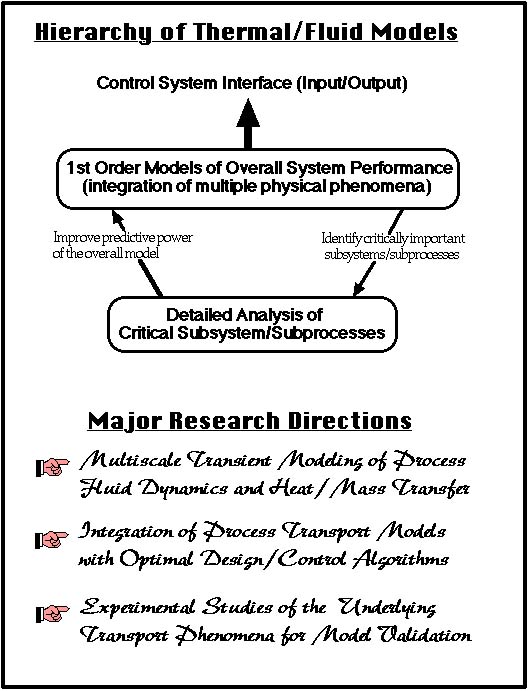
 MULTISCALE
MULTISCALE 
Because the overall behavior of most real systems is defined by the intimate coupling and mutual interactions of physico-chemical processes that take place at very different time and length scales. For example, the performance of such a very large and complex engineering system as the glass melting furnace (it can be 100 feet long!!!) depends largely on the transport processes taking place in the very thin (few centimeters in thickness) foam blanket that covers the glass surface [1]. Another example would be adsorption based gas separation systems where adsorption, taking place on a nanometer scale, influences significantly the overall "macro"-dynamics of the separation system [2].
 INTEGRATED
INTEGRATED 
Because the optimal design and efficient operation of engineering systems can only result from the proper integration and control of best practices from various, sometimes unrelated, technical disciplines with the economic, environmental, ethical and public policy considerations [1,2].
 THERMOFLUIDICS
THERMOFLUIDICS 
Because thermal/fluid sciences (thermofluidics), despite being rather "old" and well established engineering discipline, still play a critical role in understanding, predicting, and designing of the most advanced systems ranging from the power generation and aerospace technologies to thermal management of microelectronics to medical and biological technologies.
 |
 |
 |
